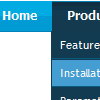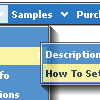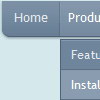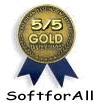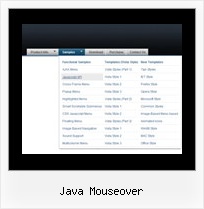Recent Questions
Q: I would like to purchase your software but not for web use. We often give out data cd's to our brokers for instance data management/finding. Your software with the custom menu system and ease of use to setup is just what I need to cut down my design time. But looking at your license agreement you require us to register it to a domain or intranet domain which this will not be on.
I am looking to create a menu system then burn it to a cd to allow people to carry it around with them. What do i register the domain as so that I am able to burn this to cd and they don't get a nag screen when with a client or briefing.
Thank you in advance
A: Thanks for your interest in our products.
To use Deluxe Menu on CD/DVD you should buy developerlicense. Other licenses allow you to use the menu on Internet/Intranetwebsites only.
Q: In deluxe tuner, on a horizontal dropdown menu, how I make sure long menu items can wrap into 2 lines? Losing my mind trying to figure this out.
For example...
Instead of.. International Music X Home Decoration X Books..... I want to to do:
International X Home X Books
Music Decoration
A: You should set the following parameter:
var noWrap=0;
Or use standard <br> tags inside item's text:
["International Music X Home<br>Decoration X Books","", "", "", "", "", "0", "0", "", "", "", ],
Try that.
Q: I am testing your product, and I would like to know, on the menu can the Plus sign be changed to expand a menu to a pointer or bullet?
A: You can use your own icons instead of Plus sign.
You should use the following parameters:
var texpandBtn=["default.files/expandbtn2.gif","default.files/expandbtn2.gif","default.files/collapsebtn2.gif"];
var texpandBtnW=9;
var texpandBtnH=9;
Q: I have been using Deluxe Menu quite a bit, but am now running into a problem on a site I developed. When I add a submenu, it appears separated by about 100 pixels down. In this case I left it on the Menu Item “Why Maumelle” for you to look at.
Can you help me out?
A: See, the problem is that the script can't get css properties of the object if they are described in separate .css block (or file).
In other words, you can't get the value of "position" attribute of the object if the object doesn't have this property within inline style(style="position:relative"). To get the value you should move .css style into style="" attribute.
Please, try to add your
css file -> inline css, for example:
For example, you should add style="position:relative;"
to the
<DIV class=MainBody>
<DIV class=Banner></DIV>
<DIV class=Menu>
So, you'll have:
<DIV class=MainBody style="position:relative;">
<DIV class=Banner></DIV>
<DIV class=Menu style="position:relative;">
Now we have only such solution for this problem.
We'll try to fix this problem in the future versions.


